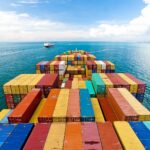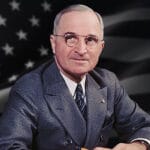Free Trade Day is observed on May 8 of every year. Free trade is a trade policy that does not restrict imports or exports. You can also think of it as the idea of a free market in the context of international trade. It is predominantly supported by political parties whose ideology is that of economic liberalism. Economic nationalists and left-wing parties advocate for protectionism. Protectionism is the economic policy of restricting imports from other countries through taxes on imported goods, import quotas, trade barriers, and other government regulations. Most governments still impose some of these protectionist policies to support local employment.
History of Free Trade Day
The idea of a free trade system within multiple states originated in a simple form in the 16th century. They were penned by Spanish theologian, Francisco de Vitoria. Adam Smith and David Ricardo were two British economists who later developed the idea of free trade in its modern form. Economists who advocated free trade believed it was the reason certain civilizations prospered economically, such as Egypt and China. This issue has been debated for many centuries.During the American Revolution, the British Parliament issued the Prohibitory Act in 1775, blockading colonial ports. The Second Continental Congress responded by declaring economic independence. This meant that American ports were opened to foreign trade on April 6, 1776. Three months later, they declared sovereign independence. This free trade did not last very long, according to the economic historian, Paul Bairoch. He says that since the end of the 18th century, the United States has been “the homeland and bastion of modern protectionism.”During the Civil War in the 19th century, high tariffs began to appear when northern traders wanted to protect their trade from the southern competition. The South opted for open trade policies to export cotton. From 1934, trade liberalization began to take place through the Reciprocal Trade Agreements Act. After World War II, the United States has often been a proponent of reduced tariff barriers and free trade. They helped establish the General Agreement on Tariffs and Trade and later the World Trade Organization. Since then, the U.S. has negotiated various managed-trade agreements. These include the Israel–United States Free Trade Agreement in 1985, and the Dominican Republic-Central America Free Trade Agreement in 2006.At present, most countries are members of the World Trade Organization. It limits in certain ways but does not eliminate trade barriers and regional free trade areas that lower trade barriers between members. In 2018, the Comprehensive and Progressive Agreement for Trans-Pacific Partnership came into effect, which includes eleven countries that have borders on the Pacific Ocean.
Free Trade Day timeline
Spanish theologian Francisco de Vitoria comes up with a rudimentary form of the system.
According to historian John W. Tyler, “free trade had been forced on the Americans, like it or not”.
They do not adhere to free trade until 1945.
Trade liberalization gradually begins to take place in the United States.
This legal agreement is established between many countries, whose purpose is to promote international trade by reducing or eliminating trade barriers such as tariffs or quotas.
The first free trade agreement is entered into by the U.S., with many more to follow.
Its purpose is to limit trade barriers in certain ways, and most countries in the world are now members.
Free Trade Day FAQs
How many free trade agreements are there in the world?
There are around 420 regional trade agreements currently in operation around the world, according to the World Trade Organization.
Who does the U.S. have free trade with?
The United States of America has agreements currently in operation with 20 countries: Australia, Bahrain, Canada, Chile, Colombia, Costa Rica, Dominican Republic, El Salvador, Guatemala, Honduras, Israel, Jordan, Mexico, Morocco, Nicaragua, Oman, Panama, Peru, Singapore, and South Korea.
What are Rules of Origin
Rules of Origin (RoO) are the criterion required to determine the country of origin of a product for the purposes of international trade.
How to Observe Free Trade Day
-
Learn more about free trade
If this article got you interested, and you want to know even more, there are many theory books about it. You can also look for opinion articles on news websites specialized in the economy.
-
Discuss free trade with others
Start a conversation on social media, or in person with your friends and family, if they know about it. Try to consider both the benefits and disadvantages of the system. That’s the secret to every good discussion.
-
Watch a debate between experts
There are many debates about the topic between economists on YouTube, both old and new. Again, the best way to see this is to evaluate the good points each participant makes, and try to ignore videos or comments that think one participant “won” the debate.
5 Important Facts About Free Trade
-
Origin of Free Trade Day
Free Trade Day was created by Dr. Tom Stevens, founder of the Objectivist Party.
-
May 8 is Friedrich Hayek’s birthday
Friedrich Hayek was an Austrian economist and proponent of free trade, thus the date was chosen for Free Trade Day.
-
Trade openness is currently at its highest
This has been claimed by economists and economic historians such as Federico Giovanni and Antonio Tena-Junguito.
-
Generally, economists support free trade
The broad consensus among them seems to be that free trade and the reduction of trade barriers have a positive effect on economic growth.
-
Benefits of free trade
Free trade benefits the citizens of participating countries by allowing them to buy better-priced, higher-quality goods.
Why Free Trade Day is Important
-
It’s a day to learn about the economy
Whether you support free trade or not, being aware of it is useful for everyone. Even if you don’t agree with it, understanding the pros and cons can take you one step closer to the economic system that is most ideal for you.
-
It teaches us the impact of free trade
Things like the World Trade Organization were made possible by adopting aspects of free trade. Even if a proposed system isn’t fully implemented, years of debate and consideration can result in the world adopting elements of them.
-
It helps us understand the world a little better
What is free trade? What kind of people support it? What are the consequences of governments adopting it or aspects of them? These are the kind of questions we can answer after learning extensively about the topic.
Free Trade Day dates
| Year | Date | Day |
|---|---|---|
| 2023 | May 8 | Monday |
| 2024 | May 8 | Wednesday |
| 2025 | May 8 | Thursday |
| 2026 | May 8 | Friday |
| 2027 | May 8 | Saturday |
































